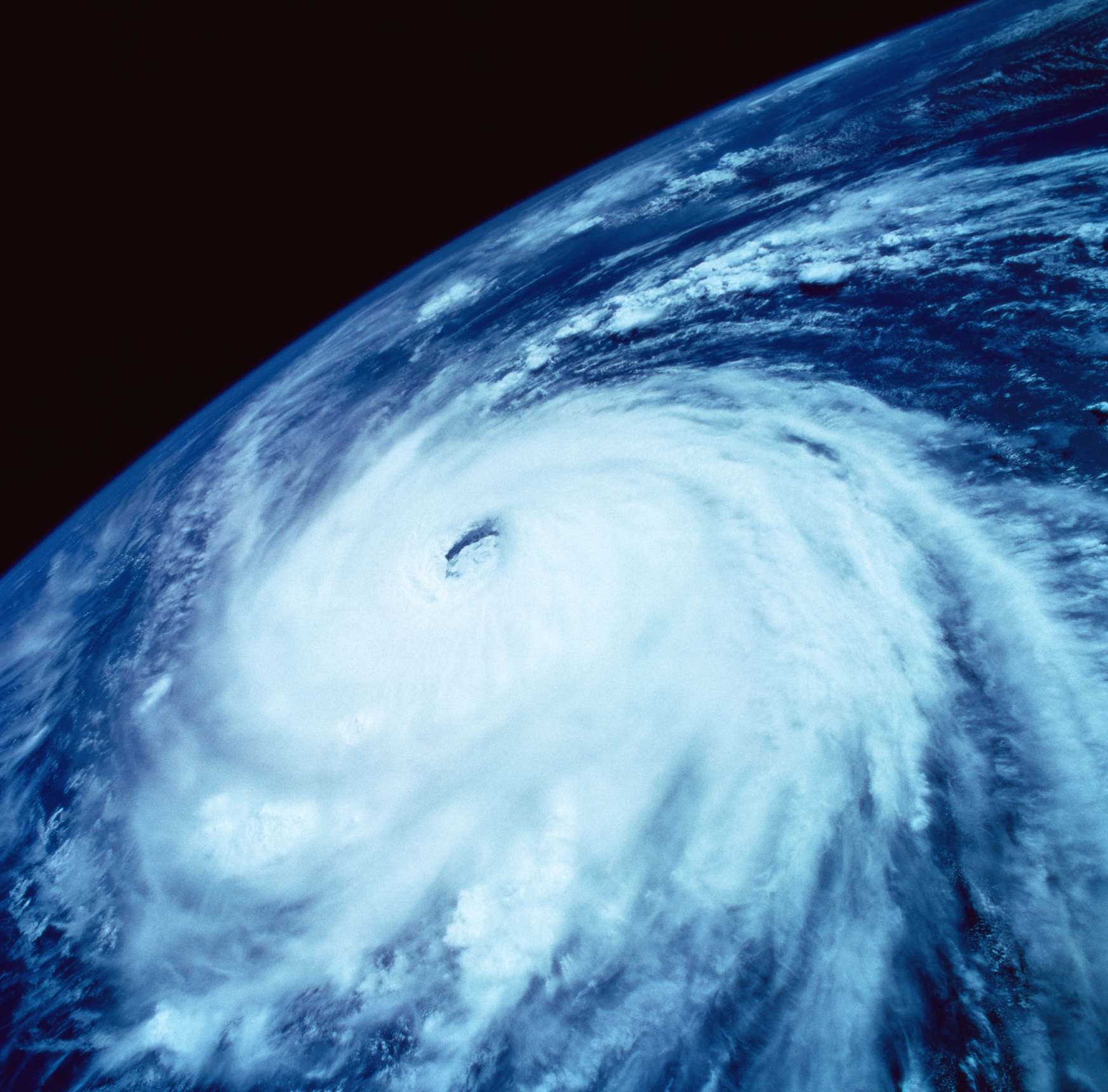Devolving Responses to Natural Disasters
Matt A. Mayer, Visiting Fellow, The Heritage Foundation
[tab name=”MEDIA COVERAGE”]Coming Soon[/tab]
[tab name=”VIDEO”]Coming Soon[/tab]
[tab name=”IMPACT”]Coming Soon[/tab]
[end_tabset]
Background/Problem
After three full years (January 20, 2009, to January 19, 2012), it is clear that the Obama Administration has adopted the views of the Clinton and Bush Administrations on how to use the Federal Emergency Management Agency (FEMA) as a political pork-barrel spending agency. In 2011, the Obama Administration set records for:
- The total number of FEMA declarations: 242 versus 158 set in the 1996 election year;
- The number of Major Disaster Declarations (MDDs): 99 versus 75 set in 1996 and 2008; and
- The number of Fire Management Assistance Declarations (FMADs): 114 versus 86 set in 2006.
It also posted the third-highest number of Emergency Declarations (EDs) in FEMA history—29 versus 68 set in 2005, the year of Hurricane Katrina. These records fell despite the absence of any successful terrorist attacks, any Category 2 or higher hurricanes, or any earthquakes greater than 6.0 on the Richter Scale.
Because FEMA is funded with federal income tax receipts, this level of activity impacts its budget. FEMA’s budget is in excess of $10 billion per year and Congress must periodically replenish the Disaster Relief Fund, which is the fund used to cover the costs of natural disasters. Limiting FEMA’s activities would reduce the cost of FEMA and the frequency with which Congress replenishes the DRF.
FEMA’s budgetary woes came to the fore during the most recent budget brinksmanship in Washington, D.C., that ended with a deal that postponed one of the key questions driving the debate: Should FEMA continue federalizing more and more natural disasters, or should the federal government respect the Constitution? FEMA’s current spending and declaration trends represent a microcosm of the larger problems facing America; namely, the federalization of activities, driven by a massive expansion of the federal government. Congress should either limit the use of FEMA declarations or accept the near total federalization of disasters, as well as the federal fiscal cost and increased danger that goes with that reality.
A Historical View of FEMA Declarations
As the chart on the following page shows, the federalization of natural disasters began its dramatic increase in 1993 with the election of Bill Clinton. In his reelection year, President Clinton issued 158 declarations, which broke the record of 61 declarations that had stood since 1977. That same year, he issued 75 MDDs, which was a 56 percent increase over the 1972 record of 48 declarations, and 75 FMADs, which more than tripled the previous record of 20 he set in 1994.
In just eight years, President Clinton issued a whopping 716 FEMA declarations, encompassing 62 percent of all FEMA declarations from 1953 to 1993. Clinton’s yearly average of FEMA declarations was 89.5 declarations, more than doubling President George H. W. Bush’s yearly average (43.5) and tripling President Ronald Reagan’s yearly average (28). Other than under Reagan, since 1953, the yearly average has increased every presidential term.
President George W. Bush raised the bar even higher by finishing his eight years having issued 1,037 declarations, or 129.6 per year. He broke Clinton’s record of FMADs by 11 declarations in 2006 and tied the record for MDDs in 2008. He set the record for the number of EDs at 68 in 2005 when the response to Hurricane Katrina involved nearly every state. Bush’s declaration total represents a full 31 percent of all FEMA declarations from 1953 to today.
Though President Obama started off slowly, relatively speaking, with 108 declarations in each of his first two years, he did break the record of MDDs by posting 81 declarations in 2010. In 2011, Obama once again set a record by issuing 243 declarations, which included a record 100 MDDs and a record 114 FMADs. Obama’s three-year average stands at 153 declarations per year.
To truly put this figure in perspective, it means that somewhere in America in 2011, a disaster occurred every day and a half that required the intervention of the federal government because each of these disasters overwhelmed a state and its local governments. Most Americans would be hard-pressed to remember any disasters in the United States in 2011 other than Hurricane Irene (15 MDDs compared to four MDDs due to Hurricane Katrina), the Joplin tornado, and the Tuscaloosa tornado.
Federal Disaster Policy Creates Incentives to Nationalize Disasters
Continuing this approach would be a colossal mistake given that (1) most response resources are locally owned, and (2) response times from Washington, D.C., are often achingly slow. With the exception of hurricanes, disasters do not generally provide advanced warning about their arrival; as a result, federal responses come well after the fact. Just as significantly, the federalization of natural disasters has led to the fact that, today, a majority of states do not benefit from FEMA’s largesse. Thus, a majority of states would be far better off keeping their funding and managing their routine natural disasters without federal intervention.
Under the Robert T. Stafford Disaster Relief and Emergency Assistance Act of 1988 (Stafford Act), the federal government pays at least 75 percent of the disaster response so long as FEMA has issued a declaration. That means that at least 75 percent of the above costs are shifted to the other 49 states not affected by the disaster. Without a FEMA declaration, these costs are borne entirely by the state and local governments affected by the disaster.
Given these incentives, it should not be a surprise to anyone that Presidents, given their electoral interests, have been eager participants in this redistribution game. Governors encouraging federalization are adopting a “spread the wealth” mentality.
Federalization of Disasters Leaves States and FEMA Ill-Prepared
Often overlooked in the discussion on the role of FEMA is the impact that federalization has on the overall preparedness of both the states and FEMA. In addition to the above-mentioned incentives for governors to nationalize disasters so they can spread the costs of their disaster management to other states, the federalization of disasters also undermines the preparedness of state and local emergency management agencies.
As discussed more fully in the author’s book Homeland Security and Federalism: Protecting America from Outside the Beltway:
[w]hen FEMA federalizes routine natural disasters, states and localities lose the incentive to prepare for those events. As a result, FEMA will inherit the load. At the same time as changes were happening in Washington that caused substantial complaints from the emergency 1188 management community, states, responding to the federalization of disasters, were cutting emergency management budgets by an average of almost 25 percent.
These cuts leave states with too few disaster response capabilities, which only create more incentives to nationalize routine disasters. This ratchet-down effect places all but the smallest disasters outside the reach of the Stafford Act.
The federalization of routine disasters requires FEMA to get involved with a new disaster somewhere in the United States every 1.5 days. This operational tempo keeps FEMA perpetually in a response mode, leaving too little time and resources to adequately focus on catastrophic preparedness. It, therefore, should be no surprise that FEMA, according to a government audit in 2008, “continues to perform well responding to non-catastrophic or ‘garden variety’ disasters; however, it still has much to do to become a cohesive, efficient, and effective organization to prepare for and respond to the next catastrophic event.” The bottom line is that this heightened pace is putting an undue burden on FEMA staff and systems
Solution: A Fairer – and Better – Way to Manage Disasters
It is clear that the current definition used by FEMA to issue declarations is routinely ignored. After all, no reasonable person would concede that, pursuant to the Stafford Act, the vast majority of FEMA declarations involved disasters that were “of such severity and magnitude that effective response [wa]s beyond the capabilities of the State and the affected local governments and that Federal assistance [wa]s necessary.” In some cases, the FEMA declarations were issued months after the disaster struck, further highlighting the extent to which federal responses to natural disasters have become more a matter of money than emergency support.
In order to reverse this federalization of disasters, Congress should:
- Modify the Stafford Act. As the litmus test for federal disaster dollars, the Stafford Act fails to accurately determine which disasters meet the federal requirements and which do not. Congress should establish clear requirements that limit the types of situations in which declarations can be issued—eliminating some types of disasters entirely from FEMA’s portfolio.
- Lower the cost-sharing provisions. Congress should reduce the cost-sharing provision for all FEMA declarations to no more than 25 percent of the costs. This will help to ensure that at least three-fourths of the costs of a disaster are borne by the taxpayers living where the disaster took place. For catastrophes with a nationwide impact, such as 9/11 and Hurricane Katrina, a relief provision could provide a higher federal cost share when the total costs of a disaster exceed a certain threshold amount.
Stop the Federalization of Disasters
From 1953 to today, Presidents have issued 3,367 FEMA declarations. In just the past 19 years out of those 59 years, Presidents Clinton, Bush, and Obama have accounted for 2,213 FEMA declarations, or 66 percent. Global warming aside, this juxtaposition of figures indicates a far simpler explanation for the remarkable jump in federalized disasters: pork-barrel politics.
Over the last 19 years, politicians on both sides of the aisle and from across the country viewed the increasing federalization of FEMA declarations as another way to get federal funds into their states. It is time for policymakers to stop clamoring for money and to start living by the motto they all proclaim: “All disasters are local.” Almost all disasters are indeed local, which is why the vast majority of them should be responded to, run by, and funded by state and local governments and their taxpayers. Save FEMA and federal funds for the exceptional catastrophes that do require the federal government to step in.
Costs/Funding
The current proposal does not require additional funding; rather, FEMA’s budget needs to be reduced.
Positive Outcomes
There are four positive outcomes stemming from the implementation of this idea: (1) federal spending would be reduced; (2) FEMA would focus its resources on preparing for truly catastrophic events; (3) states and localities would retain funding that could help build state and local capabilities to handle most natural disasters without federal intervention; and (4) states would stop indirectly subsidizing risks in other states (e.g., Ohioans, via federal incomes taxes, would not subsidize tornado responses in Oklahoma).
Legislation
The only legislation that would be needed to institute the reforms articulated in this paper is legislation that amended the Stafford Act as recommended above.
Applicability to Massachusetts
Massachusetts is a loser when it comes to FEMA. Specifically, as the 14th largest state encompassing roughly 2.1 percent of the U.S. population, Massachusetts pays a lot more in federal taxes to FEMA than it receives back due to MDDs. From 1993 to today, Massachusetts only received 1.3 percent of all FEMA MDDs. During that span, FEMA issued just 14 MDDs, or just 0.7 MDDs per year, to Massachusetts. As a result, Massachusetts subsidizes the other states.
Future Goals/Conclusion
After successfully winning this battle, the future goal is to decentralize as many federal functions that historically were handled entirely by state and local governments. There is simply no reason why the federal government dictates policy on education, health care/Medicaid, transportation, and interior domestic security. State leaders don’t need the federal government telling them how to educate their kids, tend to their poor, maintain their infrastructure, or secure their jurisdictions.
Congress should reform the fundamental problems with FEMA’s disaster-response framework and return power to state and local governments—even if they would gladly give up that power for federal funds. Political expediency and fiscal bailouts should never trump the Constitution.



Leave a Reply
Want to join the discussion?Feel free to contribute!